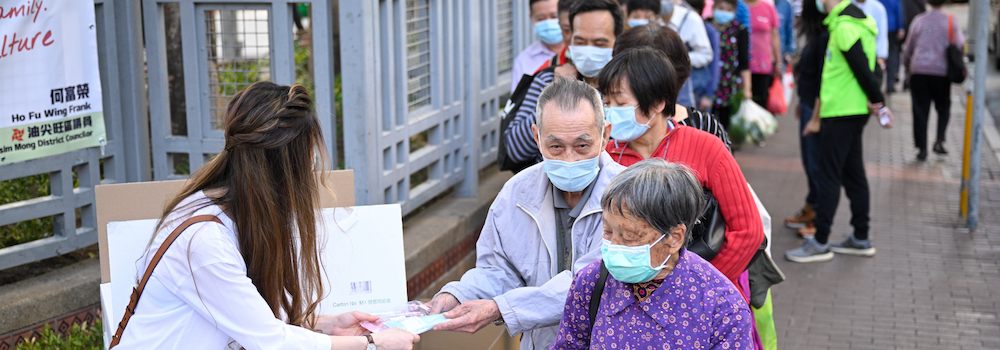
By Hung-Lung Wei, Michael K. Lindell, Carla S. Prater, Jiuchang Wei, Fei Wang, and Yue "Gurt" Ge
According to the Centers for Disease Control and Prevention, the annual impact of seasonal influenza in the U.S. is 9 to 41 million illnesses, 140,000 to 710,000 hospitalizations, and 12,000 to 52,000 deaths. Researchers have examined risk perceptions about influenza to identify ways that information sources can motivate people to take protective actions. However, few studies have looked at how people perceive characteristics of the stakeholders that serve as sources of information and protective action.
Understanding Protective Actions during Influenza Outbreaks
The protective action decision model (PADM) proposed by Lindell and Perry (2004, 2012) identified three perceived stakeholder characteristics that may affect people’s adoption of protection action recommendations (PARs): expertise, trustworthiness, and protection responsibility. In this study, we compared perceptions of stakeholder characteristics among respondents in the United States and China to understand whether these perceptions are related to protective actions for influenza.
During the summer of 2013, avian influenza A (H7N9) infected 137 people and caused 45 deaths in China. Following this outbreak, the University of Science and Technology of China distributed 1,375 questionnaires to residents in the Chinese province of Anhui to assess their responses to the health threat. Of these, 762 questionnaires were collected and used for analysis.
The following year, the Hazard Reduction and Recovery Center at Texas A&M University mailed questionnaires to households in Bryan-College Station, Texas, to evaluate residents’ reactions to seasonal influenza. Of the 1,000 randomly selected households, 405 usable questionnaires were returned.
Both surveys assessed perceptions of the same stakeholder types: health authorities, news media, internet and social media, peers, and immediate families. Respondents were asked to rate each stakeholder type on their expertise, trustworthiness, and protection responsibility (i.e., how much responsibility they have for protecting people from the disease). Respondents were also asked whether they were sick during the H7N9 outbreak (Anhui) or during the previous flu season (Texas), and whether they had taken specific protective actions during these outbreaks.
Power, Perceptions, and Protective Actions
China and the United States provide an interesting comparison, because the two nations are significantly different in terms of cultural power distance and individualism. Power distance refers to the way in which members of a society view the hierarchy of people in power versus subordinates. In high power-distance cultures, lower-ranking individuals tend to defer to power and accept their place in society. Low power-distance countries emphasize the individual and prioritize equality, which often results in subordinates questioning how things are done. On the Hofstede scale, China has a power distance score of 80, while the United States has a score of 40. The dimensions of power distance and individualism would be expected to influence people’s perceptions of stakeholder characteristics.
Survey analysis showed that, with regard to expertise and trustworthiness, Texas respondents rated health professionals substantially higher than other stakeholders. Conversely, the Anhui respondents drew little distinction among the various stakeholders and the three characteristics. In addition, Texas respondents rated local news media as substantially less credible than public health authorities, whereas the Anhui sample rated news media as roughly equivalent to other sources. This may be related to the fact that news media in China is linked much more closely with the national government than in the United States.
Culture, Credibility, and Stakeholder Characteristics
These differences in the Texas and Anhui samples support previous cross-national influenza research findings, which suggest that people in different countries can have very different perceptions of the same type of information sources. Therefore, those charged with communicating influenza risk must recognize that people in other countries can differ in their assessments of which sources are the most credible. In addition, countries should consider their own culture’s social context when developing health risk communications that are based on research from other countries.
Second, in both samples, the ratings of stakeholder characteristics were consistently correlated with protective actions. This finding lends support to the PADM proposition that stakeholder characteristics influence protective actions. We can assume that when stakeholders are seen as having high levels of both expert knowledge and trustworthiness, people are likely to be more compliant with the protective actions they recommend. Therefore, messaging efforts related to influenza risk should not only communicate the protective actions people should take; they should also consider how to influence perceptions of stakeholders.
Because public health officials are perceived to have a higher level of protection responsibility than other stakeholders, these organizations and agencies must work to maintain their credibility by actively managing any respiratory infectious disease outbreaks. They must also proactively ensure they are identified as the source of information when disseminating information via news media, internet, and social media during a health emergency. This will maximize the likelihood that people will take the recommended protective actions and, ultimately, could save lives.
About the Special Collection
This special collection of Research Counts grew out of a longstanding collaboration between the International Journal of Mass Emergencies and Disasters (IJMED) and the Natural Hazards Center. Our commitment in this special collection is to bring key findings and ideas from recent IJMED articles to a broader audience of emergency managers, disaster risk reduction professionals, and policy makers in the hazards and disaster field.
This Research Counts article was written by science writer, Laurie J. Schmidt. It is based upon the following publication:
Wei, Hung-Lung, Michael K. Lindell, Carla S. Prater, Jiuchang Wei, Fei Wang, and Yue Gurt Ge. 2018. “Perceived Stakeholder Characteristics and Protective Action for Influenza Emergencies: A Comparative Study of Respondents in the United States and China.” International Journal of Mass Emergencies and Disasters 36(1): 52-70.



Hung-Lung Wei has conducted several multidisciplinary research projects on hurricanes, floods, earthquakes, tsunamis, volcanoes, tornadoes, water contamination, and pandemic influenza that were supported by the National Science Foundation, National Natural Science Foundation of China, U.S. Army Corps of Engineers, Texas A&M University, and the City University of New York. Since 2014, Wei has published 11 scientific articles in top peer-reviewed journals (i.e., International Journal of Disaster Risk Reduction; International Journal of Mass Emergencies and Disasters; Journal of Risk Research; Journal of Transportation Security; Natural Hazards; and Natural Hazards Review), and two entries in Encyclopedia of Security and Emergency Management.